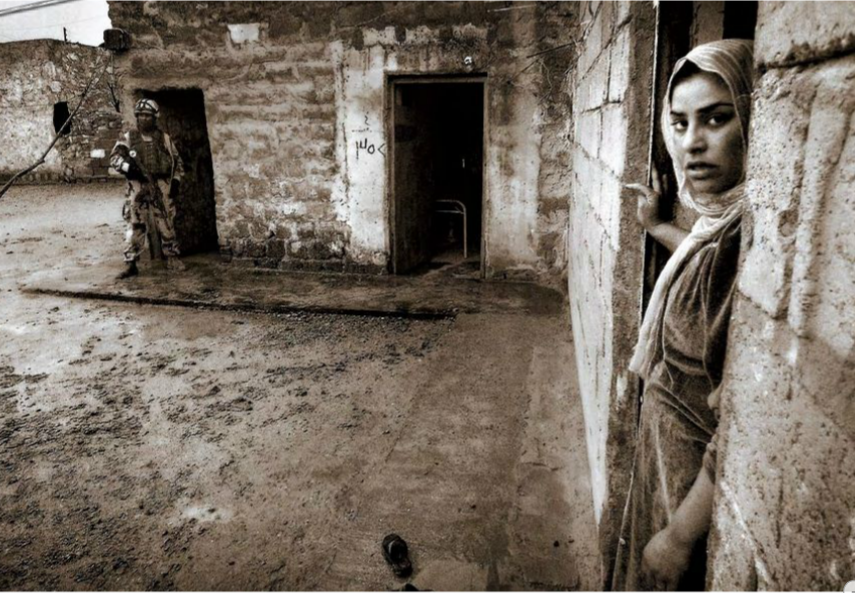Anthony Cave, News21
Marine Sergeant Raymond Lott rapped about war when his camera lens wasn’t focused on battlefields.
Lott is a Marine photographer who was deployed in Iraq in 2006 and Afghanistan in 2008. He is now finishing his service in New Orleans.
The 30-year-old California native often reflects on his time overseas. But he unleashes the day’s “stresses” in a studio, rapping about his experiences.
In “Here Now,” Lott raps that he joined the military because he realized that “a little boy needed change in his life.”
When he wasn’t rapping, Lott was photographing – Iraqi women, firefights, Marines bandaging civilians and carrying out military duties. But Lott’s raps soothed him.

Marine photographer Raymond Lott received a 2007 Thomas Jefferson media award for this picture of an Iraqi woman. The awards are presented by the Department of Defense. (Courtesy of Raymond Lott)
“It’s reflective therapy. You need to get out these emotions in any form; I use therapy through music,” said the man whose rap name is RSonic.
Lott has uploaded more than 50 videos on YouTube. He has more than 2,400 subscribers and his most popular video has almost half a million YouTube views.
“I’m helping people,” he said of his raps. “It helps them see the world in a different way.”
His photography also offers a worldview. Lott won a Thomas Jefferson media award presented by the Department of Defense in 2007 for his photo of an Iraqi woman.
